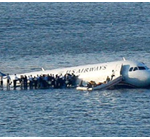 US Air Flight 1549: Crisis, Pressure, and Leadership
US Air Flight 1549: Crisis, Pressure, and Leadership
Chesley Sullenberger gained world-wide fame in early 2009 with the masterful emergency landing of his passenger aircraft on the Hudson River in downtown New York City. The experience of Sullenberger, however, runs amazingly deep in this dramatic 8-minute event. Learn how a leader gains personal control in a crisis, organizes thought and action in a few minutes’ time, and deals with separate groups of followers in a pressure situation.
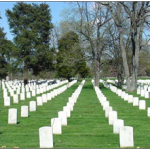 A Day Full of Meetings: Personal Purpose, Leadership, and the Last Day of Martin Luther King, Jr’s Life
A Day Full of Meetings: Personal Purpose, Leadership, and the Last Day of Martin Luther King, Jr’s Life
Martin Luther King Jr. went about his day on April 3, 1968. He didn’t know it was the last full day of his life. He did what many of us do—he spent the day in meetings. For him, there were four meetings during his last full day on earth. Dr. King’s experience will show you how to find the purpose, vision, and vitality of leadership in the midst of personal struggles and on the cusp of a life-ending event. We never know when death will visit us.
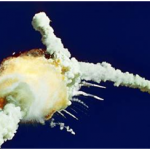 Ronald Reagan and the Challenger Speech of 1986: Tragedy, Leadership and You
Ronald Reagan and the Challenger Speech of 1986: Tragedy, Leadership and You
One of the most powerful moments in any leader’s life is when he or she is called upon to help followers deal with tragedy. Ronald Reagan confronted exactly this moment when the space shuttle Challenger exploded in late January of 1986. By exploring Reagan’s experience in depth, you will gain a better understanding of your role as a leader in tragedy, especially in framing the meaning and moment for your followers.
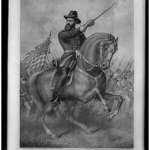 First Time Leader: Benjamin Harrison in the Civil War
First Time Leader: Benjamin Harrison in the Civil War
Before he was the 23rd president of the United States, Benjamin Harrison was a twenty-something young man on the move. He had really never been a leader up to this point in his life and yet the eruption of the Civil War changed all of that. Harrison’s experience as the commanding officer of the 70th Indiana regiment is a powerful foundation for learning what to do and what not to do, what to expect and what not to expect, as a first time leader.
 The Next Stage of Life: Benjamin Harrison, Community Leadership, and the Latter Stages of Life
The Next Stage of Life: Benjamin Harrison, Community Leadership, and the Latter Stages of Life
After he was 23rd president of the United States, Benjamin Harrison returned to his adopted hometown, Indianapolis, Indiana. There he began a separate stage of his leadership experience, one that was remarkable for all that he accomplished in what would in hindsight be the final stages of life. His post-presidency leadership was a stirring story that showed how a leader grows, evolves, and changes regardless of age and position.
 Teams and Projects: The Lewis and Clark Expedition of 1803-1806
Teams and Projects: The Lewis and Clark Expedition of 1803-1806
William Clark and Meriweather Lewis received the assignment of taking a group of people west from Missouri, exploring as far toward the “great ocean” as they could navigate. It was a team on a project. The experience of this breathtaking event will illustrate the realities of team leadership and project management, but in a totally new and surprising way. You’ll learn about vision, problem solving, unity, decision-making, risk, and bouncing back from failure and defeats.
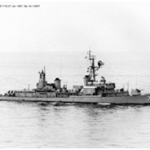 John Kennedy and the Cuban Missile Crisis of 1962: On the Knife Edge of Crisis, the Known, and the Unknown
John Kennedy and the Cuban Missile Crisis of 1962: On the Knife Edge of Crisis, the Known, and the Unknown
President Kennedy was compelled to respond to a global emergency—the threat of the Soviet Union’s missiles in Cuba and the immediate prospect of nuclear war. Kennedy as the leader had to deal with this issue in the midst of a shifting world order, a rapidly evolving field of national and international security, and internal dissension, conflict, and tension. He had to work with different sets of teams at different yet simultaneous points of crisis.
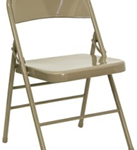 The Folding Metal Chair: Eleanor Roosevelt and the Challenge of Making Decisions
The Folding Metal Chair: Eleanor Roosevelt and the Challenge of Making Decisions
First Lady Eleanor Roosevelt was a leader in her own right but with practically no formal training or preparation for the role. Despite these barriers, she confronted a situation where she had to make a difficult decision in the open public. The decision involved race, bigotry, politics, and social customs, an explosive mix in the late 1930s. In the blink of an eye, Eleanor Roosevelt used a folding metal chair to make a powerful statement.
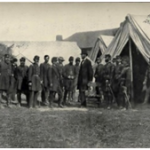 Abraham Lincoln, Rounding, and the Movement of Communication in Leadership
Abraham Lincoln, Rounding, and the Movement of Communication in Leadership
Two dramatic occasions illustrate Abraham Lincoln’s use of rounding, the term used for leadership and management by walking around. This pair of experiences show rounding in two starkly different situations, each equally vital, each equally beneficial. In the late summer of 1862 Lincoln visited the headquarters and camp of the Army of the Potomac after hearing rumors of the army’s hostility toward him. In the late winter of 1865 Lincoln visited Petersburg, Virginia, just hours after Confederate forces had evacuated the city and Union forces had reclaimed it for the United States. These are rich, compelling, and unforgettable explorations of rounding in leadership.
 The Presentation You Have To Get Right: George Washington and Communicating to a Hostile Group
The Presentation You Have To Get Right: George Washington and Communicating to a Hostile Group
In March 1783 Washington faced the challenge of speaking directly to a group of fifty American military officers. They were outraged at how political leaders had treated them. They were ready to march on Congress and essentially launch a military coup of the new American government. Washington had to overcome his discomfort with public communication and make the most important speech of his life. See what he did, and learn what his actions can do for you today.
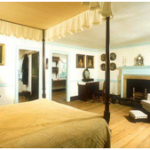 Never Too Old To Change: George Washington and the Nightmare That Changed His Life and His Death
Never Too Old To Change: George Washington and the Nightmare That Changed His Life and His Death
We often hear about the difficulty of change. Many times, that difficulty centers on people who think they are too experienced, too seasoned, and frankly have been around just too long to bother with the need and idea of change. The events of a late August night during 1799 in the home of George Washington will point to a new way for you to lead change on both personal and organizational levels.
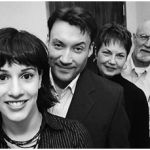 Generational Differences: Getting Better Results With The Power Of History
Generational Differences: Getting Better Results With The Power Of History
All the time we hear about the importance of understanding generational differences in the workplace. You ignore them at your peril. That’s true. However, there is an additional way to learn how to identify and actually gain from generational differences. History, creatively approached and creatively explored, will offer you fresh insights and actions into the workings of generations in your organization. You can learn about four ways that generations affect your workplace and four techniques for harnessing generations for greater effectiveness.
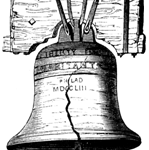 Making Sense, Making Plans, and Making Decisions: The Historical Revolution Model and Major Change in Your Organization, Industry, and Life
Making Sense, Making Plans, and Making Decisions: The Historical Revolution Model and Major Change in Your Organization, Industry, and Life
Some of history’s most fascinating stories and periods pertain to revolution. Our own nation, the United States, is itself the product of revolution. A revolution has a particular nature to it, and as such, can be studied, analyzed, and recaptured for the purpose of improving leaders and leadership in the midst of major change. The people and events of the American Revolution are a gold mine of leadership insights and strategies for you to adapt to your environment of revolutionary change.
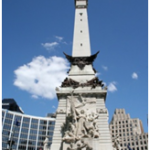 Two Crises, Two Leaders, One Place: Robert Kennedy and Benjamin Harrison in a City of Danger
Two Crises, Two Leaders, One Place: Robert Kennedy and Benjamin Harrison in a City of Danger
Both Kennedy and Harrison confronted the problem of what to do when public violence threatens. Standing in different centuries, Kennedy (1968) and Harrison (1877) share a unique success—helping to calm a crowd that could at any moment erupt into chaos and violence. These two leaders demonstrate timeless characteristics and techniques for communicating in the face of crisis, danger, and emergency.
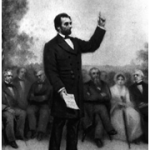 Abraham Lincoln and the One-Armed Man: Leadership and Bonded Communication
Abraham Lincoln and the One-Armed Man: Leadership and Bonded Communication
The Gettysburg Address is one of the most famous speeches in American history. But unknown to almost everyone is the connection between two people on that important day. Abraham Lincoln and a one-armed man share a bond, the bond of special communication in leadership. Learn how a leader can use specific techniques for developing, sharing, and strengthening the bond he or she has with their followers.
 Martin Luther King: Communication and Dealing with Opponents, Rivals, and Enemies
Martin Luther King: Communication and Dealing with Opponents, Rivals, and Enemies
Few leaders in American history encountered as much varied and shifting opposition to his ideas as Martin Luther King in the civil rights movement of the 1950s and 1960s. King saw that opposition has many layers and forms. He dealt with opposition through a blend of consistent themes, modified strategies, and effective communication. King also displayed the importance of the personal and individual nature of leadership, demonstrating the power of courage and conviction.
 John Wooden: Teams, Development, and Leadership
John Wooden: Teams, Development, and Leadership
Many leaders work closely with small numbers of followers, though directly or indirectly they may affect hundreds or thousands of other people. John Wooden’s leadership resembled this dynamic in his career as a college basketball coach. At any given time Wooden led twelve young men, aged from nineteen to twenty-three. Wooden crafted leadership strategies to forge those individuals into a team. His leadership included an emphasis on training and development for each team member.
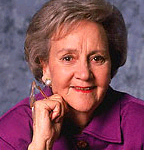 Katharine Graham: Gaining Confidence
Katharine Graham: Gaining Confidence
Thrust into a formal leadership position by her husband’s suicide, Katharine Graham became publisher of the Washington Post in 1963. She ignored calls to step down and seized upon the chance to solidify the future of her children. Her leadership of the Post resulted in the corporation’s explosive growth over a thirty-year period. Graham acquired experience and expertise over time and guided the organization through some of the most difficult crises in the history of American media.
 Dr. Elizabeth Morgan: The Influence of Education and the Test of Challenges
Dr. Elizabeth Morgan: The Influence of Education and the Test of Challenges
An outstanding plastic surgeon in Washington DC, Morgan’s experiences in medical school showed the role that educational structures play in shaping the approach to leadership. Morgan was one of the few women in medical schools in the 1960s and 1970s. She realized the limitations that educational systems have in developing one’s personal leadership. She discovered that leadership comes from forging one’s inner beliefs despite unpopularity. Later, in the 1980s, these beliefs helped Morgan cope with one of the most publicized child-custody cases. Throughout the ordeal, she remained true to her convictions and learned that leadership can be found in surprising places.
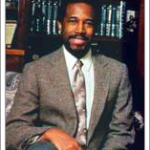 Dr. Ben Carson: The Role of Spirituality and Personal Faith
Dr. Ben Carson: The Role of Spirituality and Personal Faith
Ben Carson overcame a background of poverty and racial discrimination to become the United States’ foremost pediatric neuro-surgeon. Carson reached a pivotal moment in his life when he faced the decision to continue a slide into anger or redirect his energy into education. Carson relied on a series of personal mentors to develop not only his knowledge but also his leadership. He translated that awareness into action as a surgeon, showing the role of leadership in the daily work of a doctor.
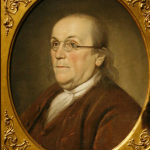 The 1721 Smallpox Epidemic of Boston: Leadership and Innovation
The 1721 Smallpox Epidemic of Boston: Leadership and Innovation
Leaders often find themselves in situations where they pursue change and innovation. What surprises them is that innovation produces a variety of perspectives and agendas. Not all of them will point to the same direction. Leaders will need to understand the different goals and expectations of each other. They will also need to grasp the role of communication in advocating for innovation and be on the watch for prejudices against unorthodox sources of information.
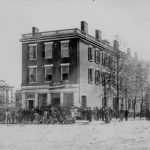 The United States Sanitary Commission in the Civil War: Leadership and the Challenge of Change and New Organizations
The United States Sanitary Commission in the Civil War: Leadership and the Challenge of Change and New Organizations
A group of Northern men and women struggled to meet the needs of thousands of sick and wounded Union soldiers from 1861 to 1865. They clashed with each other over women’s rights, the importation of new ideas from Europe, and how to respond to unprecedented demand for medical treatment and care. They also dealt with existing bureaucracies resistant to change and perceived upstarts. Each leader discovered the complexity of pursuing change, meeting a need in the market, and fending off intrusions from rivals.
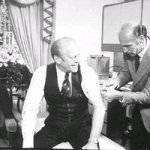 The Swine Flu Controversy of 1976: Leadership and Decision-Making
The Swine Flu Controversy of 1976: Leadership and Decision-Making
Decisiveness is supposed to be one of the cornerstones of leadership. In short-term and long-term crises, however, the ability to make decisions can be skewed under the pressure to “do something.” That pressure becomes especially unbearable when leaders assume that a mistake or misfortune from the past is certain to be replayed unless swift, sure decisions are made. The swine flu controversy of the mid-1970s revealed the importance of analyzing options and information independent of hasty assumptions and overworked clichés.
 Harry Truman: Making Decisions in Tough Times
Harry Truman: Making Decisions in Tough Times
Making tough decisions is easy when you’re popular. But what about when you’re not well-liked and indeed are blamed for nearly everything that goes wrong? Harry Truman faced exactly this circumstance in late 1946. Not only did he get the blame for his political party losing the 1946 elections, but he soon confronted the issue of whether or not the United States would return to its isolationist ways or take greater risks in being a world leader. Truman maintained his ability to decide controversial issues and to promote support for new positions.
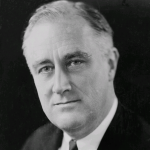 Franklin Roosevelt: Planning New Visions and Maintaining Support—One of the Five Management Functions
Franklin Roosevelt: Planning New Visions and Maintaining Support—One of the Five Management Functions
He entered the US presidency as “Dr. New Deal,” the man who would guide the nation out of the Great Depression. He left the presidency as “Dr. Win the War,” committed to directing the United States against the rising threat of fascism and militarism embodied by Germany, Italy, and Japan. Roosevelt worked as a leader to convince his followers to accept the need to change visions and to pursue a cause that many Americans had regarded as disastrous only a few years before.
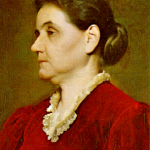 Jane Addams: Organizing Tasks and Staff for a Vision—One of the Five Management Functions
Jane Addams: Organizing Tasks and Staff for a Vision—One of the Five Management Functions
Launched in the late 1800s in Chicago, Hull House was a new approach to helping impoverished immigrants in cities. Jane Addams not only defied conventional attitudes that said women could not be leaders, but also overturned accepted notions about the pursuit of change in industrial population centers. As a leader, Addams instructed her staff on how to define their duties and execute plans for new programs. Addams’ leadership revealed the value of tight connections between vision, goals, methods, and, ultimately, the market.
 Martin Luther King: Staffing and the Growth of a Leader—One of the Five Management Functions
Martin Luther King: Staffing and the Growth of a Leader—One of the Five Management Functions
As chief executive of the Southern Christian Leadership Conference (SCLC), Martin Luther King was leader of an organization devoted to helping people who regarded themselves as powerless. King applied his leadership skills to drawing the most talented staff to his organization and to forging them into an effective unit. King sought to expand his approach to staffing when he moved from being minister of a church congregation to leading a sprawling civil rights organization.
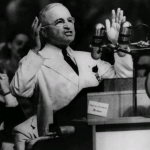 Harry Truman: Delegating and Decision-making—One of the Five Management Functions
Harry Truman: Delegating and Decision-making—One of the Five Management Functions
Delegation is simple in situations where the stakes are low. It’s a different story when the outcome can have long-lasting effects. Harry Truman demonstrated leadership skills in forging an identity among his core team members and in allowing them to have major responsibilities in pursuing one of the most volatile new foreign policies in American history.
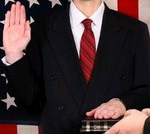 Elizabeth Morgan: Monitoring and Accountability—One of the Five Management Functions
Elizabeth Morgan: Monitoring and Accountability—One of the Five Management Functions
The process that produced doctors in Vietnam-era America resulted in an unusual mix of monitoring and accountability for Elizabeth Morgan. On the one hand she saw evidence of unrivaled efforts to maintain high-quality levels of patient treatment. On the other hand, though, Morgan learned that some of the habits and folkways of medical professionals undercut monitoring and accountability. In the end, a personal tragedy revealed to Morgan that the most individual sources of responsibility provide the greatest value in monitoring and accountability.
 The Constitutional Convention of 1787: Strategic Planning and Leadership
The Constitutional Convention of 1787: Strategic Planning and Leadership
Fifty-five delegates gathered together during the hot summer of 1787. They forged a blueprint for a new government. In the process, they encountered many of the same obstacles and challenges that we find in strategic planning today. Leaders in Philadelphia had to devise strategies and responses to complete their “strategic plan” and lay the groundwork for its implementation. These same strategies and responses can be adapted to our current circumstances in strategic planning.
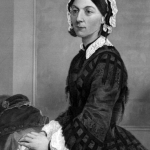 Florence Nightingale: Change and Reform in Leadership
Florence Nightingale: Change and Reform in Leadership
Nightingale’s work in nursing anticipated many of the issues and solutions that we seen in today’s healthcare environment. She confronted a powerful resistance to change. Her response to this resistance was a mixture of do’s and don’ts in leadership, each applicable to situations in the healthcare organizations of the twenty-first century.
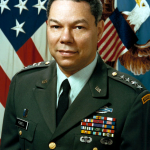
 Colin Powell and Franklin Roosevelt: Vision, Strategy, and Execution
Colin Powell and Franklin Roosevelt: Vision, Strategy, and Execution
Both leaders confronted military conflicts. Their responses showed two distinct approaches to leadership, especially how they used previous experiences to understand current issues. The lessons of Powell and Roosevelt’s leadership underscore the need to fully perceive the role that a leader’s past has on his or her behavior in present-day situations.
 Leadership in the Avian Flu Crisis: Lessons from the Influenza Pandemic of 1918 and Swine Flu Controversy of 1976
Leadership in the Avian Flu Crisis: Lessons from the Influenza Pandemic of 1918 and Swine Flu Controversy of 1976
The handling of public emergencies is as much about leadership as it is technical details. Leadership will have a major impact on how well your organization will respond to the emerging avian flu crisis. In the examples of 1918 and 1976 you will see leadership behavior on the national and state levels as well as in an individual hospital (Methodist Hospital, Indianapolis, Indiana)
 Growing and Knowing Your Own: Leadership Case Studies from the History of Your Organization
Growing and Knowing Your Own: Leadership Case Studies from the History of Your Organization
Learn more about the leaders who have made your organization what it is. The time in doing so will identify leadership do’s and don’ts for your aspiring leaders today, as well as crystallize the unique values of your organization.
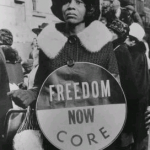 Martin Luther King, Jr: The Establishment and Maintenance of Strategic Alliances
Martin Luther King, Jr: The Establishment and Maintenance of Strategic Alliances
King had to find sources of power for his civil rights movement. One of those sources was connecting to other groups and organizations, known today as strategic alliances. King’s experience with the NAACP in the late 1950s and early 1960s outlines in clear fashion the best and worst approaches to strategic alliances.
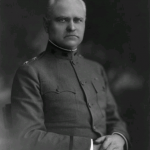 George Goethals: Leadership, the Completion of the Panama Canal, and the Role of Duty in Servanthood
George Goethals: Leadership, the Completion of the Panama Canal, and the Role of Duty in Servanthood
George Goethals was the man most responsible for completing the Panama Canal from 1907 to 1914. His leadership of a 40,000-person workforce was a model of the role of duty, a long-forgotten word in our world, as a fundamental aspect of servant leadership. Goethals provides a new perspective on the concepts of service, serving, and customer service in general.
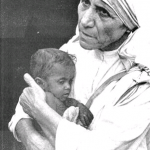 Mother Teresa: The Second Ring of Service
Mother Teresa: The Second Ring of Service
She is one of the most significant figures of the 20th century. Yet, in her own way, Mother Teresa is “one of us.” Her understanding of service offers a standard that can impact our day to day leadership. And through it all, Teresa dealt with and overcame perhaps the most enormous obstacle one can face—doubt.
 NASA, 1957-1962: Seeking Excellence in an Imperfect Environment
NASA, 1957-1962: Seeking Excellence in an Imperfect Environment
The National Space and Aeronautic Administration (NASA) began in 1957. By 1962 it attained what was at that time its greatest achievement, the John Glenn space mission. In this same five-year period NASA struggled with how to seek excellence in a setting where mistakes were inevitable. The leadership experience of these five years shows how the same features can be realized in your organization.
 Starbucks: Knowing Your History and Confronting the Fork in the Road
Starbucks: Knowing Your History and Confronting the Fork in the Road
Starbucks began in 1971. By 1987 it reached an important fork in the road. The experience of Starbucks in these years shows the need to understand the role of your organization’s history, how it affects daily operations, and its implications for making key decisions at critical junctures of growth and expansion.
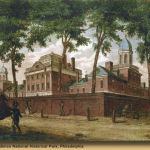 Beginning Pennsylvania Hospital, 1751-1756: Founding versus Starting Up
Beginning Pennsylvania Hospital, 1751-1756: Founding versus Starting Up
The people who began North America’s first hospital, Pennsylvania Hospital, had their hands full with launching a totally new approach to health care. But in the midst of their daily crises, they understood the differences between founding and starting up. They built for the long haul. Learn how to do the same in your organization, whether in its birth or re-birth.
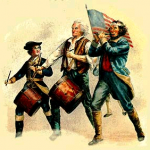 Change and Leadership: Insights from the American Revolution, 1775-1796
Change and Leadership: Insights from the American Revolution, 1775-1796
We tend to think of ourselves as surrounded by a bewildering pace of change. What we don’t think of is that people have been surrounded, engulfed, and consumed with change before. The American Revolution provides penetrating insights into the effects of change on leadership and also the impact of leadership on change. The lessons are as fresh as today.
 A Tragic Turn: Six Leaders and the Death of Martin Luther King, Jr.
A Tragic Turn: Six Leaders and the Death of Martin Luther King, Jr.
King died on April 4, 1968. Six leaders in Indianapolis, ranging from Robert Kennedy, an internationally known figure, to Charles “Snooky” Hendricks, a local activist and small-time criminal, dealt with the shocking news. Find out how leadership is affected by the jolt of tragedy, and the role that leadership has in shaping that tragedy. Visit this site to purchase my book about these six leaders on that fateful night.



